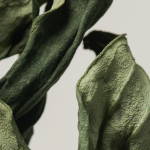Acne is one of the most common skin concerns, affecting people of all ages. Whether it’s a few occasional pimples or persistent breakouts, acne can be frustrating and impact your confidence. But with the right skincare routine and targeted treatments, you can manage acne-prone skin and enjoy a clearer complexion.
In this comprehensive guide, we’ll explore the causes of acne, effective treatments, and tips to prevent future breakouts.
🧠 What Causes Acne?
Acne occurs when hair follicles become clogged with oil, dead skin cells, and sometimes bacteria. This results in the formation of pimples, blackheads, or cysts. There are several factors that can contribute to acne, including:
- Excess oil production: Overactive sebaceous glands produce too much oil, which can clog pores.
- Hormonal changes: Fluctuations in hormones—such as during puberty, menstruation, or pregnancy—can increase oil production.
- Bacteria: The bacteria Propionibacterium acnes (P. acnes) thrive in clogged pores and can cause inflammation and infection.
- Diet: High-glycemic foods, dairy products, and sugary snacks have been linked to acne in some individuals.
- Stress: Stress can trigger hormone imbalances that contribute to acne.
- Genetics: If your parents had acne, you might be more likely to develop it yourself.
🚨 Common Signs of Acne
Acne can present itself in various forms, including:
- Whiteheads: Small, closed pimples that appear when pores are clogged with oil and dead skin.
- Blackheads: Open comedones that occur when pores are clogged, and the oil inside oxidizes.
- Papules: Small, red, inflamed pimples without pus.
- Pustules: Pimples that are filled with pus and are often painful.
- Cysts: Deep, painful lumps under the skin that can lead to scarring.
🛠️ How to Treat Acne-Prone Skin
1. Cleanse Gently Twice a Day
A proper cleansing routine is the foundation of acne treatment. Cleanse your skin morning and night with a gentle, oil-free cleanser that’s formulated for acne-prone skin. Look for cleansers that contain:
- Salicylic acid: A beta hydroxy acid (BHA) that exfoliates the skin and helps clear clogged pores.
- Benzoyl peroxide: An antibacterial ingredient that targets the acne-causing bacteria, reducing inflammation.
Avoid harsh scrubbing, as this can irritate the skin and worsen acne.
2. Incorporate Spot Treatments
For stubborn pimples, use targeted spot treatments that contain acne-fighting ingredients like:
- Salicylic acid or benzoyl peroxide
- Tea tree oil: A natural ingredient with antibacterial properties
- Sulfur: A soothing ingredient that reduces inflammation
Apply spot treatments directly to blemishes after cleansing, and don’t overuse them, as they can be drying.
3. Moisturize with Oil-Free Products
Even if your skin is oily, you still need to keep it hydrated. Look for oil-free moisturizers that won’t clog pores. Look for products containing:
- Hyaluronic acid: A hydrating ingredient that won’t make your skin greasy.
- Glycerin: A humectant that helps the skin retain moisture.
Make sure your moisturizer is non-comedogenic, meaning it won’t block your pores.
4. Incorporate Retinoids
Retinoids are a game changer for acne treatment. They work by increasing cell turnover, preventing clogged pores, and reducing inflammation. Over-the-counter options like retinol or stronger prescription formulas like tretinoin can be extremely effective. Use them in your nighttime routine and be consistent.
Note: Retinoids can make your skin more sensitive to the sun, so always apply sunscreen during the day.
5. Exfoliate Weekly
Exfoliating once or twice a week can help remove dead skin cells and prevent clogged pores. Choose an exfoliant that contains:
- Salicylic acid (BHA), which is great for acne-prone skin.
- Glycolic acid (AHA), which can improve skin texture and prevent new breakouts.
Avoid harsh physical scrubs, as they can cause irritation and inflammation.
6. Use Clay Masks for Deep Cleansing
Clay masks, especially those containing bentonite or kaolin clay, can help draw out impurities and control oil production. Use a clay mask once a week to reduce excess oil and deeply cleanse your pores.
7. Consider Hormonal Treatments (If Needed)
For some individuals, acne may be linked to hormonal fluctuations, such as during puberty or menstruation. If your acne is hormonally-driven, talk to your dermatologist about oral contraceptives or spironolactone, which can help balance hormones and reduce acne.
🔥 What to Avoid for Acne-Prone Skin
- Pore-clogging ingredients: Avoid comedogenic ingredients in your skincare products (e.g., heavy oils, lanolin, or certain silicones).
- Touching your face: Constantly touching your face can transfer bacteria and oil, leading to more breakouts.
- Picking or squeezing pimples: This can cause further inflammation and lead to scarring.
- Over-cleansing: Too much washing or scrubbing can irritate your skin and increase oil production, leading to more breakouts.
🌿 Lifestyle Tips for Acne-Prone Skin
- Manage stress: Practice stress-reduction techniques like yoga, meditation, or exercise to help keep hormones in balance.
- Stay hydrated: Drinking plenty of water helps maintain healthy skin and flush out toxins.
- Eat a balanced diet: Incorporate antioxidant-rich foods, such as berries, leafy greens, and omega-3 fatty acids, to support skin health.
- Change pillowcases regularly: Dirty pillowcases can harbor bacteria that contribute to breakouts, so change them at least once a week.
💬 Final Thoughts
Acne may seem overwhelming, but with the right skincare routine, patience, and consistency, you can achieve clearer, smoother skin. Focus on gentle cleansing, spot treatments, and moisturizing with non-comedogenic products, and avoid triggers that exacerbate acne. If you’re struggling with persistent acne, don’t hesitate to consult a dermatologist for professional guidance and personalized treatment.
Do you have any favorite acne-fighting products or tips? Share them with us @luxeskinlogic—we’d love to hear what works for you!
